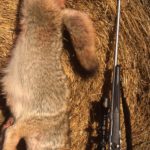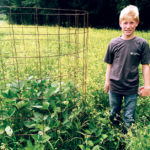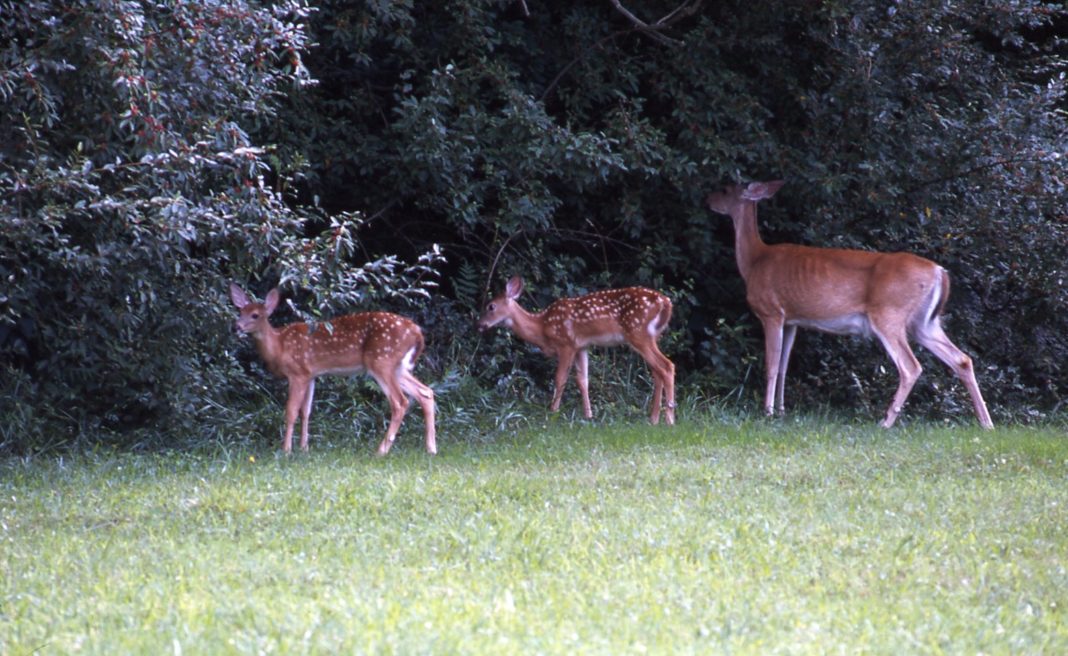Harvesting does is a key ingredient of Quality Deer Management, yet how many should you take each year? How about predator impact on the deer herd… or disease? Once upon a time deer management seemed much easier without the onslaught of coyotes or EHD.
The Quality Deer Management Association can help with this dilemma and has developed a 24-question diagnostic tool.
Quick Look Assessment
 One easy way to take the temperature of your fawn survival rate is to watch deer families in the early season. Whenever you see a large doe, you should see one or two fawns. If you consistently see family groups together with one or multiple offspring, you know that predators are having a minimal impact.
One easy way to take the temperature of your fawn survival rate is to watch deer families in the early season. Whenever you see a large doe, you should see one or two fawns. If you consistently see family groups together with one or multiple offspring, you know that predators are having a minimal impact.
If you primarily see lone does or a buck with a doe in early season, it’s time to take measures to increase fawn recruitment into the herd. Fawns are defenseless against coyotes, wolves, and black bears, especially in the first month of life and reducing predator numbers may help.
24 Question Survey
 In the age of instant information with a single click, answering 24 questions may seem like a chore. However, if you want a “quality” deer assessment, you need to take as many herd elements into consideration as possible. As shown in the picture to the left, using an exclusion fence will tell you how much natural growth occurs without grazing. The plants inside of the wire show how the entire plot would look without deer browsing.
In the age of instant information with a single click, answering 24 questions may seem like a chore. However, if you want a “quality” deer assessment, you need to take as many herd elements into consideration as possible. As shown in the picture to the left, using an exclusion fence will tell you how much natural growth occurs without grazing. The plants inside of the wire show how the entire plot would look without deer browsing.
Browse-lines are another indicator of deer herd health. When deer populations progress beyond the ability of the habitat to sustain them, normal ground cover is the first to go. If you’ve visited a state or local park where deer numbers are high, every branch, twig, and leaf within a deer’s reach will be gone.
This post from QDMA can help you make the best decisions for your property and is well worth your time and efforts:
How Many Does Should You Harvest? Ask Yourself These 24 Questions.



















![The Best Deer Camp Chili [VIDEO] Deer Chili Ingredients, Tomatoes, Chili Spices](/wp-content/uploads/2015/10/Deer-Chili-Deer-Camp-Recipe-218x150.jpg)
![How to Call Elk Early in the Season [VIDEO]](/wp-content/uploads/2016/08/byers003-218x150.jpg)




![Idiots Disturb Hunter: How Would You Have Handled It? [VIDEO]](/wp-content/uploads/2015/10/DSC00110-e1474487693878-100x70.jpg)
![Albino Buck Shocked to Shed His Antlers [VIDEO]](/wp-content/uploads/2015/10/AlbinoDeer-100x70.jpg)